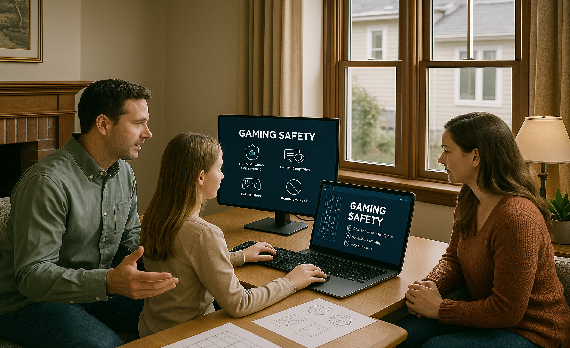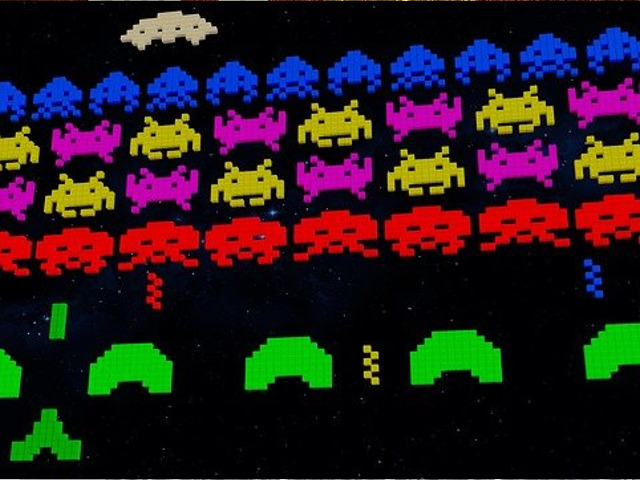https://www.jcbpioneer.com
From Our Blog
The Gamer’s Gateway: How Link Hubs Simplify Access to Mods, Forums, and Streams

Video games attract over 3 billion players worldwide, with many searching daily for reliable mods, official updates, and active gaming communities. Finding these resources can be tricky. Many players spend hours browsing multiple websites, risking broken links or unsafe downloads. An all-in-one link hub offers a solution by gathering everything in one secure place.
These link directories work as a centralized source for trusted gaming content. Players can find official patches, join fan discussions, or watch live streams without hopping between dozens of sites. Some hubs, such as Address Jura, a link collection site (source: 링크모음), curate these resources so users can explore games more safely and efficiently.
Why a Centralized Hub Matters for Gamers
Gamers often juggle multiple platforms to keep up with their favorite titles. There are forums for strategies, separate sites for mod downloads, and different platforms for live streaming. For those interested in exploring this further, unlocking the world of video games offers a deeper look into how players connect with games in new ways.
Security is another key reason. Fake mods, malware links, and phishing attempts are common in the gaming world. A trusted directory acts as a filter, showcasing only verified resources. This makes the online experience smoother and far less risky for players of all ages.
Types of Resources Found in a Gaming Link Hub
A good gaming hub covers different aspects of the player experience. These include:
- Official Patches and Updates: Direct links to developer-released updates that improve performance and fix bugs.
- Mods: Safe downloads for fan-created content, such as new maps, character skins, or gameplay features.
- Forums and Fan Communities: Spaces where players share tips, strategies, and game-related news.
- Streaming Channels: Quick access to Twitch, YouTube Gaming, or other live content platforms.
This variety makes it easier for both casual and hardcore gamers to keep everything they need within reach. It also fosters a stronger sense of community by connecting people to active conversations and live events.
How Link Hubs Benefit the Gaming Community
Beyond convenience, link hubs strengthen the gaming ecosystem. When players can easily find safe resources, they are more likely to try mods or join communities, which boosts engagement for both indie and mainstream titles. Developers also benefit, as fans who stay updated with patches are less likely to experience game-breaking bugs that lead to negative reviews.
These hubs also help new players feel welcome. Joining a gaming community can be intimidating, but a central hub offers a guided path. Newcomers can start with official guides, then explore fan forums for tips, and finally watch live streams to learn from experienced players.
Ensuring Trust and Safety in Gaming Directories
Trust is everything in a gaming link hub. Without proper curation, a directory risks including harmful or misleading links. Reputable hubs often have a team or automated system to review content before publishing it. This ensures that only verified, safe resources make it to the list.
Transparency is equally important. Many hubs share how they choose which links to include and update their lists regularly. This keeps the directory fresh and relevant for users, avoiding the frustration of dead or outdated links.
The Future of All-in-One Gaming Hubs
As gaming evolves, so will the need for centralized resources. With the rise of VR, cloud gaming, and cross-platform play, directories will need to adapt by adding new categories and supporting different formats. The goal will always be the same: give players safe, fast access to what they need.
Imagine a future where every gaming tool is a click away. From live tournament streams to fan art galleries, a hub could serve as a true one-stop gateway to all things gaming. This convenience could transform how gamers explore, connect, and share their experiences.
Final Thoughts
Gaming link hubs are more than just lists of URLs. They are carefully crafted tools that save time, improve safety, and bring players closer together. Whether you’re a casual player looking for a quick patch or a dedicated gamer searching for the latest fan-made content, having everything in one place changes the experience for the better.
For gamers, a trusted hub is like a compass in a vast digital world. It points you toward the best, safest, and most exciting parts of the gaming universe without the hassle of endless searching.
How Restoration Glass Reflects the Need for Stronger Parental Controls in Gaming?
Historical preservation projects often involve the careful restoration of original glass elements that require specialized knowledge of traditional manufacturing techniques and period-appropriate materials. Restoration glass work demands skilled craftspeople who understand glazing methods, lead came construction, and the chemical composition of period glass materials. These restoration projects preserve architectural heritage while adapting historical buildings for contemporary use, creating spaces that maintain their original character while meeting modern safety and efficiency standards.
Preserving the past through meticulous restoration not only safeguards architectural heritage but also highlights the importance of thoughtful stewardship across generations. Similarly, in today’s rapidly evolving digital landscape, another form of stewardship is emerging, one that involves guiding and protecting younger generations as they navigate immersive digital gaming environments.
Understanding Digital Gaming Environments
Modern gaming platforms have evolved into complex digital ecosystems that offer immersive experiences while presenting unique challenges for child safety and parental oversight. These environments feature social interaction capabilities, in-game purchases, and content sharing functions that require careful monitoring to ensure age-appropriate experiences.
Parents must understand various gaming platforms, their safety features, and potential risks to effectively guide their children’s gaming activities.
Effective parental guidance requires understanding of risks while recognizing the positive aspects of gaming, including skill development, social connections, and creative expression opportunities.
Implementing Effective Parental Control Systems
Parental control software provides tools for monitoring and restricting children’s gaming activities, including:
- Time limits
- Content filtering
- Communication controls
These systems enable parents to create customized gaming environments that align with family values while allowing children to enjoy age-appropriate gaming experiences. Effective implementation requires ongoing adjustment based on child development and changing gaming preferences.
Platform-specific controls offered by gaming consoles and online services provide built-in safety features that complement third-party parental control solutions. These controls typically include privacy settings, friend request management, and spending limits that help parents maintain oversight of their children’s gaming activities.
Communication and Digital Citizenship Education
Open communication about gaming experiences helps children develop critical thinking skills necessary for navigating online environments safely and responsibly. Parents who engage in conversations about gaming content, online interactions, and digital citizenship create opportunities to address concerns and reinforce positive behaviors.
Digital citizenship education teaches children about respectful online behavior, privacy protection, and the importance of reporting inappropriate conduct. These skills become essential as children increasingly participate in online communities and social gaming environments.
Age-Appropriate Content and Time Management

Checking on content rating is a crucial tool as it offers guidance in choosing a game that is fit with the children’s growing demands, and family values. Understanding these rating systems helps parents make informed decisions about game purchases while teaching children to evaluate content appropriateness independently.
Screen time management strategies help families establish healthy boundaries around gaming activities while ensuring that children maintain balanced lifestyles that include physical activity, social interaction, and academic responsibilities. These approaches require flexibility and ongoing adjustment as children grow and their interests evolve. Parents can promote balanced gaming by encouraging diverse activities, setting clear expectations, and modeling healthy technology use patterns.





